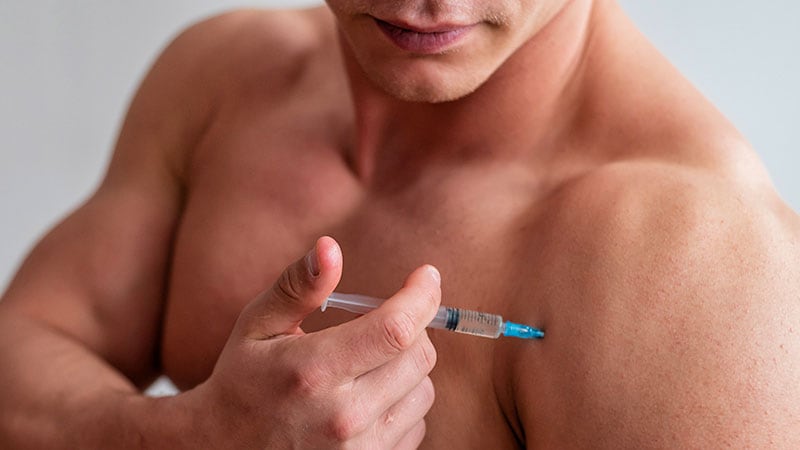Illicit Steroids: Patients' Hidden Truth Revealed by MDs
Core Concepts
Patients using anabolic steroids often feel neglected by conventional medical care, leading them to resort to self-monitoring and testing, highlighting the need for improved education and communication between patients and healthcare providers.
Abstract
Introduction
Dr. Thomas O'Connor, a former competitive powerlifter and current internist, focuses on men using anabolic steroids.
Patients feel discriminated against and misunderstood by physicians, leading to self-monitoring practices.
Patient Self-Monitoring
Users of illegal steroids turn to direct-to-consumer lab tests to monitor health conditions.
Sales of these tests are increasing, driven by individuals using steroids for muscle-building.
Medical Community Concerns
Clinicians have reservations about patients interpreting their own test results.
Lack of education and awareness among healthcare providers regarding anabolic steroid use.
Social and Cultural Influences
Cultural shifts have normalized testosterone use for muscle-building.
Social media exposure contributes to the normalization of steroid use among men.
Health Risks and Complications
Anabolic steroid use can have severe health implications affecting various body systems.
Undeclared substances in dietary supplements pose additional risks.
Patient-Physician Relationship
AAS users often distrust physicians and seek information from other sources.
Recommendations for clinicians to engage in open discussions and harm-reduction strategies.
Harm-Reduction Strategies
Approach for clinicians to address patient concerns and build trust.
Importance of nonjudgmental discussions and education within the medical community.
Illicit Steroids: If MDs Don't Ask, Patients Won't Tell
Stats
Sales of direct-to-consumer tests topped $3.6 billion in the United States in 2022.
In a study, 56% of AAS users did not disclose their use to clinicians.
Between 2.9 and 4 million Americans have used AAS at some point.
Quotes
"People using anabolic steroids should be aware of the health risks associated with such use and that laboratory analysis is an important step toward improving health outcomes." - Dr. Thomas O'Connor
"We have to accept the fact that people are using them instead of demonizing them." - Nelson Vergel
Key Insights Distilled From
by Ann Thomas at www.medscape.com 10-10-2023
https://www.medscape.com/viewarticle/997222
Deeper Inquiries
How can the medical community bridge the trust gap with AAS users to provide better care?
The medical community can bridge the trust gap with AAS users by focusing on developing rapport and understanding the reasons behind their AAS use. It is essential for healthcare providers to approach these individuals without judgment and create a safe space for open communication. By actively listening to the concerns of AAS users, healthcare professionals can build trust and establish a collaborative relationship. Additionally, offering nonjudgmental discussions about decreasing or stopping AAS use as part of harm-reduction strategies can help in addressing the health risks associated with AAS. Education plays a crucial role in bridging this trust gap, as healthcare providers need to be knowledgeable about AAS use, its complications, and withdrawal symptoms to effectively support and guide AAS users towards better health outcomes.
How does social media play in influencing the use of anabolic steroids among men?
Social media plays a significant role in influencing the use of anabolic steroids among men by promoting unrealistic body standards and glorifying muscular physiques. Platforms like Instagram showcase influencers with highly muscular bodies, creating a culture where achieving a certain aesthetic ideal becomes a priority. This portrayal can lead to body dissatisfaction and drive individuals, especially young men, towards using AAS to attain the desired muscular appearance. Moreover, exposure to images and content related to AAS on social media can normalize and even glamorize its use, making it seem like a viable option for achieving rapid muscle growth. The influence of social media on body image perceptions and the desire to emulate the physiques of online influencers can contribute to the increased use of AAS among men.
How can harm-reduction strategies be effectively implemented to address the health risks associated with AAS use?
Harm-reduction strategies can be effectively implemented to address the health risks associated with AAS use by focusing on education, open communication, and gradual intervention. Healthcare providers can start by engaging in nonjudgmental discussions with AAS users to understand their motivations, concerns, and health status. By providing accurate information about the risks and complications of AAS use, healthcare professionals can empower individuals to make informed decisions about their health. Monitoring through regular lab tests and screenings can help in identifying early signs of adverse effects and guiding interventions. Gradual reduction of AAS use, coupled with mental health support and counseling, can aid in minimizing harm and promoting safer practices. Collaborative efforts between healthcare providers, AAS users, and support networks are essential in implementing effective harm-reduction strategies to address the complex health risks associated with AAS use.
0
More on Healthcare
